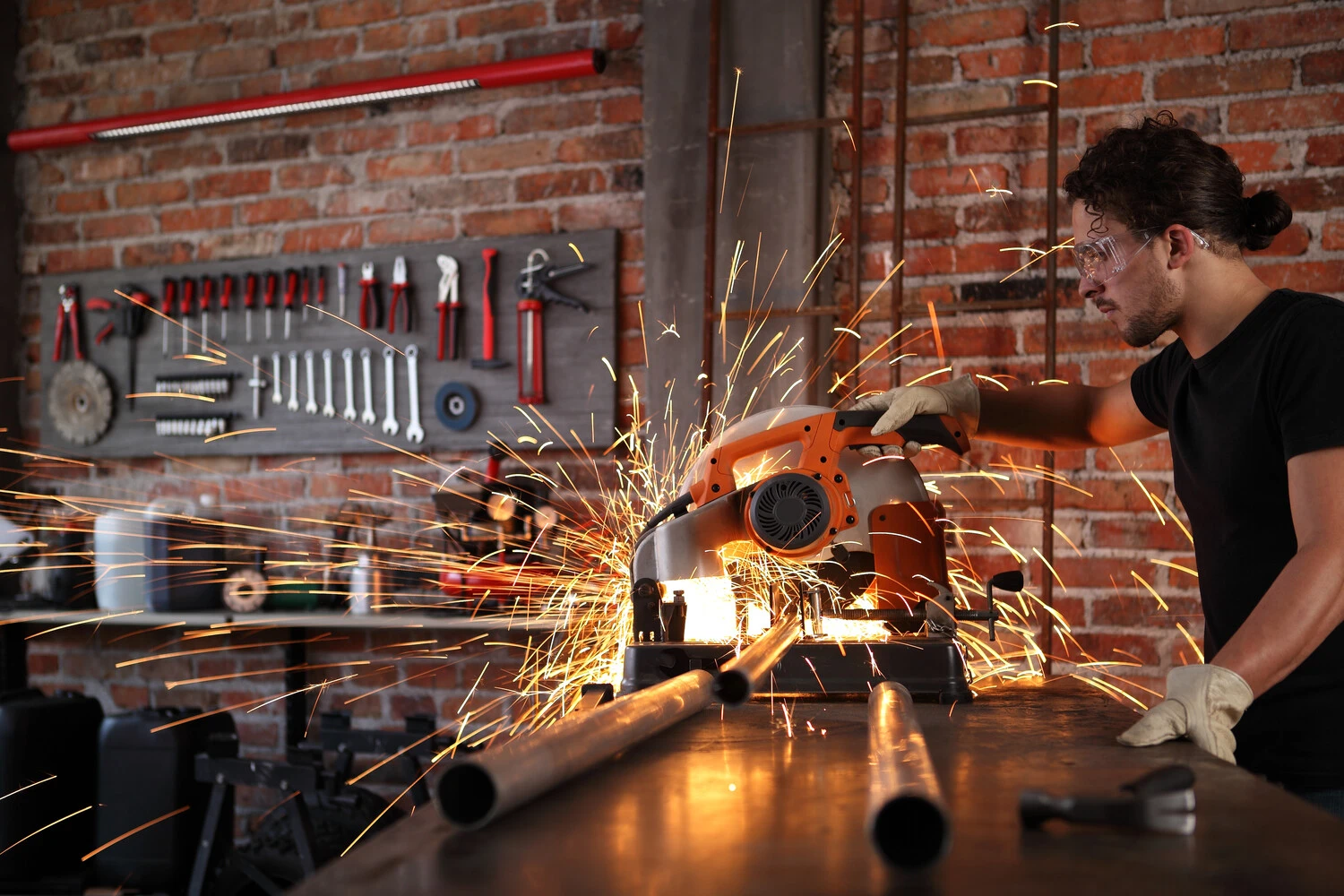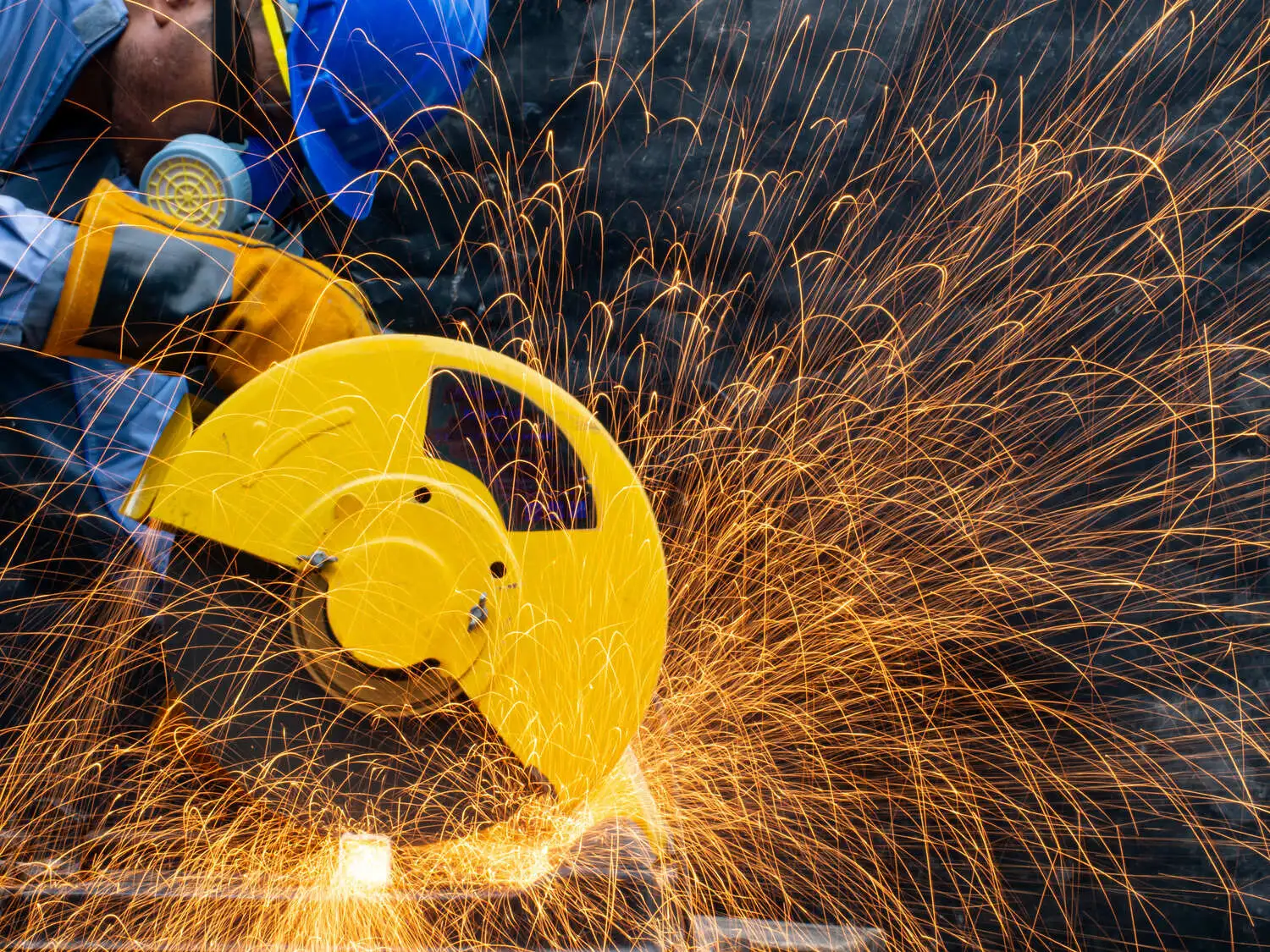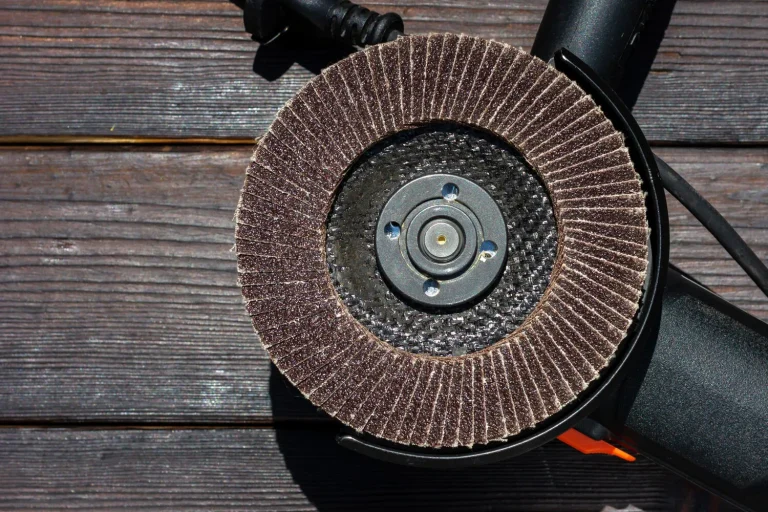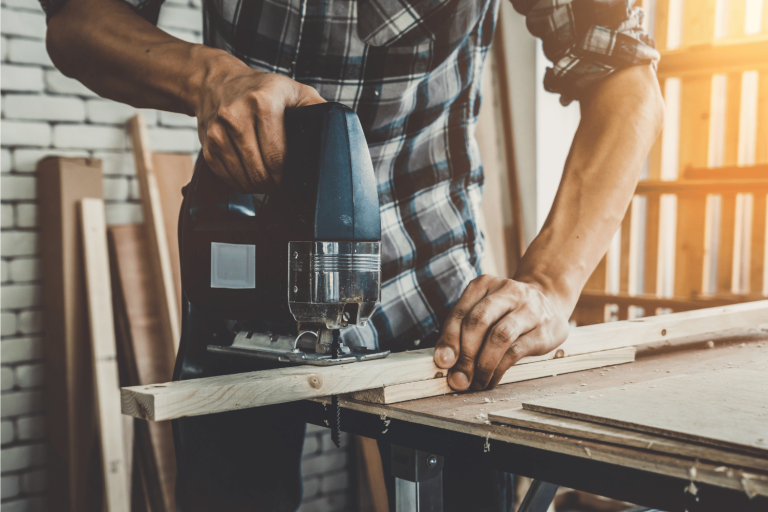Can You Cut Metal With a Miter Saw? Doing it Right
Metal cutting projects require precision, skill, and the right tools. One such versatile and powerful tool that can be used for cutting metal is the miter saw, a go-to choice for many professionals and DIY enthusiasts alike. In this comprehensive guide, we’ll walk you through the process of cutting metal with a miter saw, discuss blade selection, safety precautions, and maintenance, as well as alternative tools and common projects and applications. Let’s dive in and learn how to master cutting metal with a miter saw.
Key Takeaways
- Choose the right blade for cutting metal with a miter saw to achieve precise and clean cuts.
- Prioritize safety by wearing proper PPE, employing cutting techniques, and setting up a safe workspace.
- Regularly inspect and maintain blades to ensure efficient operation when working on DIY home repairs or construction/manufacturing projects.
Choosing the Right Blade for Cutting Metal with a Miter Saw

Achieving successful and precise cuts when cutting metal with a miter saw hinges on selecting the appropriate blade. Factors to consider include the type of carbide-tipped blade, the appropriate teeth per inch (TPI), and whether you need a non-ferrous or ferrous metal blade. By choosing the right blade, you can improve the efficiency and effectiveness of your cuts, ensuring a high-quality result for any project.
The composition and characteristics of the metal you’re cutting inform your blade selection for the miter saw. For example, softer metals like aluminum are best suited for carbide-tipped blades, while harder metals like steel may require specialized metal-cutting blades or abrasive coatings. Consult with a hardware store specialist to determine the appropriate TPI for your specific metal cutting project.
Carbide-tipped Blades
Carbide blades are renowned for their durability and ability to cut through tough or abrasive materials, such as metal, wood, and plastic. With small tips of carbide brazed onto the main body of the blade, these blades provide precise and clean cuts, reducing the potential safety hazard caused by sparks during metal cutting.
Wearing the appropriate personal protective equipment (PPE) such as safety glasses, gloves, and a dust mask is crucial when using carbide-tipped blades. Employing the correct cutting techniques and ensuring that the workspace is suitably configured, especially when cutting materials like steel angle iron, will help you achieve the best results in your metal cutting projects.
Teeth Per Inch (TPI)
The precision and speed of cuts when cutting metal with a miter saw depend on TPI, or Teeth Per Inch. Hence, it’s important to select the right TPI for your blade. For instance, cutting aluminum with a miter saw requires a blade with a TPI of 14-16.
Consulting with a hardware store specialist will ensure you choose the appropriate TPI for your metal cutting project, allowing for the best possible results. The right TPI will ensure that your cuts are accurate, efficient, and clean, reducing the risk of damage to the metal and producing a high-quality finished product.
Non-Ferrous vs Ferrous Metal Blades
Non-ferrous metals are typically softer metals like aluminum, while ferrous metals are generally harder metals like steel. Different blades are designed specifically for cutting these different types of metals, and it’s important to choose the right one for your project.
For cutting non-ferrous metals like aluminum, the Freud LU89M012 12-inch triple chip grind blade with 86 teeth and a 1-inch arbor is recommended. On the other hand, for cutting ferrous metals like steel, a ferrous-metal cutting blade like the Diablo D1260CF should be used.
By selecting the appropriate blade, you can ensure that your cuts are clean, precise, and efficient, regardless of the type of metal you’re working with.
Safety Precautions When Cutting Metal with a Miter Saw

When cutting metal with a miter saw, prioritizing safety precautions is vital. This involves:
- Wearing the right personal protective equipment (PPE)
- Employing correct cutting techniques
- Ensuring a safe workspace setup to prevent accidents and guarantee successful cutting.
Each of these safety aspects will be explored in detail in the subsequent sections.
Personal Protective Equipment (PPE)
Personal Protective Equipment (PPE) is designed to minimize exposure to hazards in the workplace and includes items such as gloves, goggles, masks, respirators, and protective clothing.
When cutting metal with a miter saw, it is crucial to wear eye protection, gloves made of a material resistant to cuts and abrasions, and hearing protection like earplugs or earmuffs.
For your PPE to be effective, it must be properly fitted and maintained. Here are some guidelines to follow:
- Eye protection should be secure and not fog up.
- Gloves should fit snugly and be free of tears.
- Hearing protection should be comfortable and not impair hearing.
By adhering to these guidelines, you can ensure your safety while cutting metal with a miter saw.
Proper Cutting Techniques
Proper cutting techniques involve:
- Slow and steady cuts, which help prevent overheating and ensure clean and precise cuts
- Keeping the saw in the down position and disengaging the power button once the cut is finished when cutting metal with a miter saw
- Maintaining a firm grip on the workpiece until the blade has reached a full stop
Adhering to the correct cutting techniques guarantees the quality of your cuts and reduces the possibility of accidents and injuries. By taking the time to learn and practice proper cutting techniques, you can enhance your metal cutting skills and ensure a safe and efficient cutting experience.
Workspace Setup
Maintaining an organized workspace is vital for accident prevention and a safe cutting experience. Here are some tips to ensure a safe and efficient workspace:
- Clear any obstructions from your workspace to prevent accidents.
- Make sure the saw is firmly attached to a solid surface to avoid any movement during cutting.
- Ensure proper lighting in your workspace to avoid any mistakes during the cutting process.
In addition to setting up your workspace, it’s important to protect the open motor housing of your miter saw when cutting metal. Covering the open motor housing with a thin cloth can help prevent metal debris from entering the motor and causing damage.
By following these workspace setup guidelines, you can create a safer environment for cutting metal with a miter saw.
Miter Saw Maintenance and Blade Care
To extend the lifespan of your miter saw and ensure its performance, regular maintenance and blade care are necessary. This includes cleaning and lubricating your saw, as well as inspecting and replacing blades as needed.
Each of these maintenance tasks will be elaborated on in the following sections.
Cleaning and Lubrication
Cleaning and lubricating your miter saw regularly will help prevent debris buildup and ensure smooth operation. To clean your saw, use a damp cloth to remove dust and debris from its surface. For lubrication, apply a light oil or lubricant to the moving parts of the saw.
For optimal performance and extended lifespan of your miter saw, cleaning and lubrication is recommended at least once a month. This practice saves time and money in the long run.
Blade Inspection and Replacement
Maintaining the cutting efficiency of your miter saw requires regular blade inspection and replacement. Look out for signs of wear and damage like warping, bending, or missing teeth. If you notice any signs of wear, it’s essential to replace the blade as soon as possible to avoid potential accidents and ensure high-quality cuts.
To replace the blade, follow these steps:
- Deactivate the saw and disconnect it from the power source.
- Use a brush or wear thick gloves to remove any debris or sawdust from the teeth of the blade.
- Loosen and remove the bolt that secures the blade.
By regularly inspecting and replacing your miter saw blade, you can maintain the cutting efficiency and safety of your miter saw.
Alternative Tools for Cutting Metal

Alongside miter saws, a variety of alternative tools are available for cutting metal, each boasting unique advantages and applications. These alternative tools include:
- Chop saws
- Circular saws
- Angle grinders
- Hand tools
The subsequent sections will delve into each tool, explaining their specific uses and benefits in more detail.
Chop Saws
Chop saws are designed specifically for cutting metal and stone, providing precise cuts using abrasive wheel disks. They are powerful cutting tools that use an abrasive disc to quickly cut along a straight line and are typically used for making fast, rough cuts.
Chop saws are particularly effective for cutting ferrous metals like steel, making them an excellent choice for construction and manufacturing applications. By using a chop saw, you can achieve clean and accurate cuts, ensuring a high-quality result for your metal cutting projects.
Circular Saws and Angle Grinders
Circular saws and angle grinders are versatile tools that can be fitted with metal cutting blades for various metal cutting tasks. Circular saws are typically used for cutting wood in straight lines, while angle grinders are suitable for cutting various materials, including wood and metal.
Both circular saws and angle grinders are relatively simple to use and can be employed for precise cuts in a wide range of applications. By selecting the appropriate blade and following safety guidelines, these versatile tools can be an invaluable addition to your metal cutting arsenal.
Hand Tools
Hand tools like hacksaws and tin snips are useful for smaller metal cutting projects and tight spaces. Hacksaws are particularly suitable for cutting softer metals like aluminum, while tin snips and aviation snips can be used for cutting sheet metal.
When using hand tools, it’s important to follow these steps:
- Use a sharp blade.
- Ensure adequate lubrication is applied to the blade before cutting.
- Take the time to make sure each cut is precise.
- Follow proper safety precautions.
By following these steps, hand tools can be an effective and economical option for cutting metal in various applications.
Common Metal Cutting Projects and Applications

Metal cutting projects and applications span across numerous industries and tasks, including DIY home repairs, artistic and decorative projects, and construction and manufacturing tasks that involve cut metal. In these processes, it’s common to encounter metal chips as a byproduct of the cutting work.
The following sections will delve into each of these applications, discussing the specific requirements and considerations for successful metal cutting in more detail.
DIY Home Repairs
DIY home repairs often involve cutting metal for various tasks, such as installing a new door or window, replacing a broken hinge, or repairing a broken fence. Miter saws are versatile tools that can be used for cutting multiple materials, such as wood, plastic, and metal.
By following proper safety precautions and employing the correct cutting techniques, you can successfully complete a wide range of DIY home repairs involving metal cutting. With a miter saw and the right blade, you can tackle these tasks confidently and efficiently.
Artistic and Decorative Projects
Artistic and decorative projects often involve cutting metal to create unique pieces, such as sculptures, custom furniture, and metal accents in interior design. These projects require precision and creativity, making miter saws an ideal tool for achieving clean and accurate cuts. In addition to cutting metal, wood cutting miter saws can also be used for various woodworking tasks, ensuring versatility in your workshop.
By using the appropriate blade for the type of metal being cut and following proper safety guidelines, you can create beautiful and intricate metal artwork and decorations for your home or business. The versatility and precision of miter saws make them an excellent choice for tackling artistic and decorative metal cutting projects.
Construction and Manufacturing
In the construction and manufacturing industries, precise metal cuts are often required for structural components, machinery, and equipment. Some commonly used cutting tools in these settings include:
- Miter saws
- Chop saws
- Band saws
- Plasma cutters
- Laser cutters
These tools are essential for ensuring accurate and efficient cuts.
By using the appropriate cutting tools and following proper safety protocols, professionals in the construction and manufacturing industries can achieve high-quality metal cuts for various applications. Whether it’s cutting metal for framing, welding, or other structural tasks, the right tools and techniques will ensure success in these demanding industries.
Final Thoughts
Cutting metal with a miter saw requires careful consideration of blade selection, safety precautions, and proper techniques. By following the guidelines and advice provided in this comprehensive guide, you can confidently tackle a wide range of metal cutting projects, from DIY home repairs and artistic endeavors to construction and manufacturing tasks. With the right tools, knowledge, and safety measures in place, you can master the art of cutting metal with a miter saw and ensure high-quality results for any project.
Frequently Asked Questions
Can you cut metal with a miter saw?
Although cutting metal with a miter saw is possible, it is not recommended. If you do use a miter saw, you need specialized accessories like mitre saw blades and high performance discs for steel and stainless steel cutting.
What saw is best for cutting metal at angles?
For cutting metal at angles, a chop saw is the most recommended choice. However, a miter saw may be used, but it should be done with care.
Is it safe to cut aluminum with a miter saw?
Cutting aluminum with a miter saw is possible with the use of a non-ferrous metal cutting blade. However, it can cause more wear than cutting wood, so take it slow and use a dust bag to reduce mess. Avoid using an abrasive disc as it may overheat and shatter.
What safety precautions should I take when cutting metal with a miter saw?
Be sure to wear protective gear, use the correct cutting methods, and arrange your work area safely when cutting metal with a miter saw.
How often should I clean and lubricate my miter saw?
Clean and lubricate your miter saw at least once a month to ensure smooth and efficient operation.







